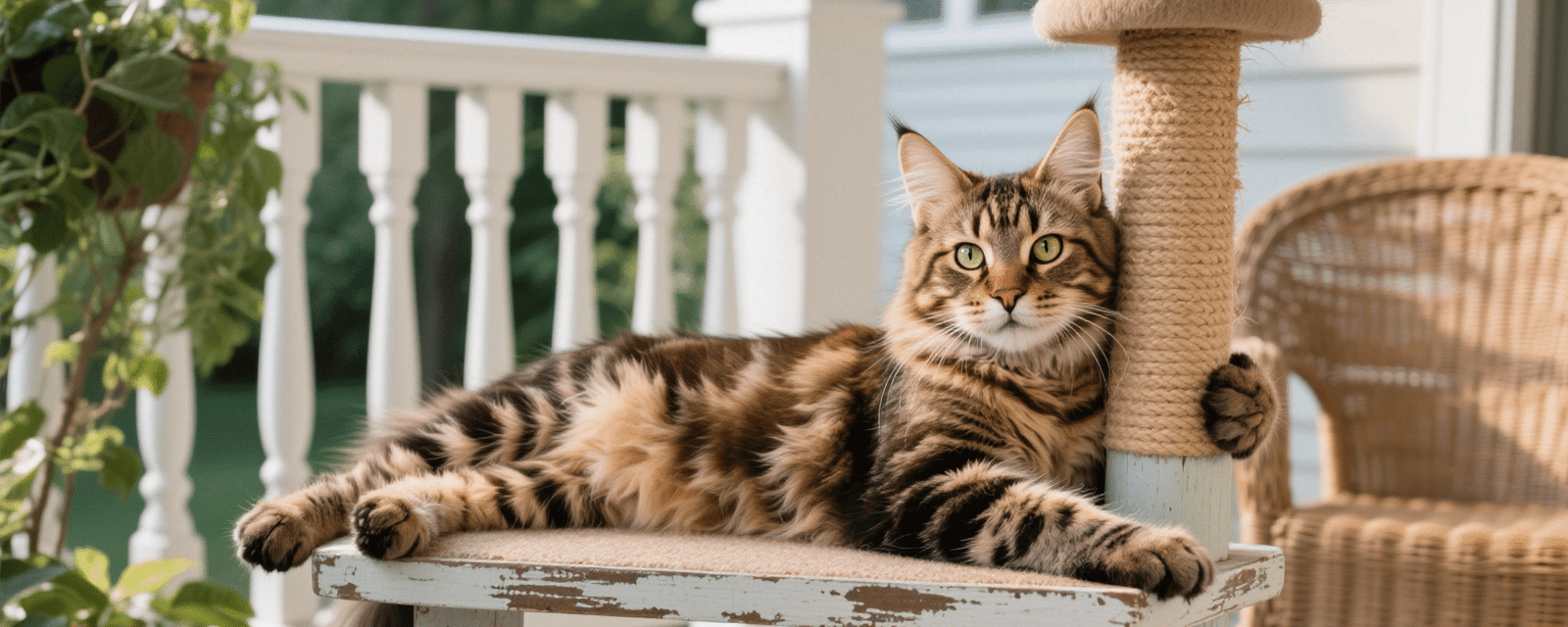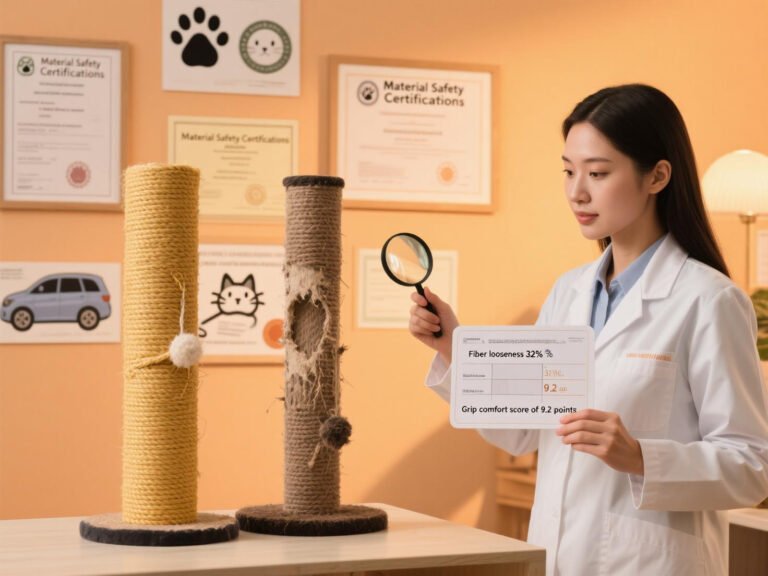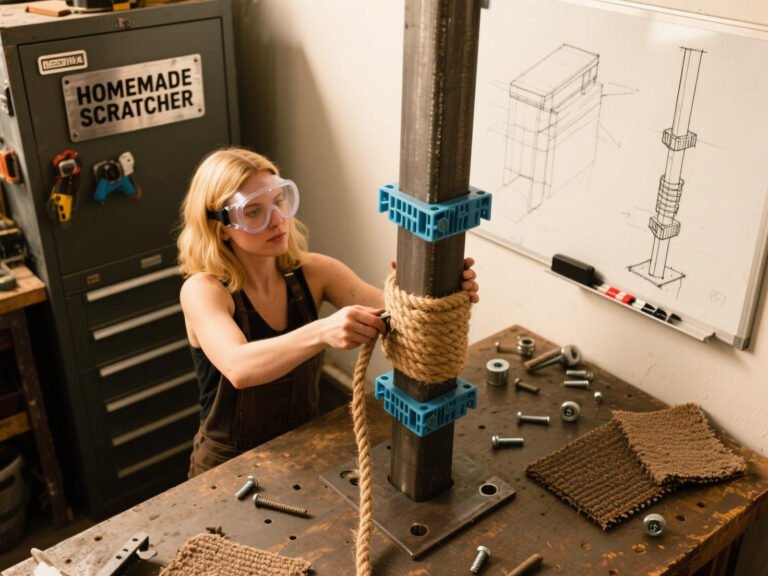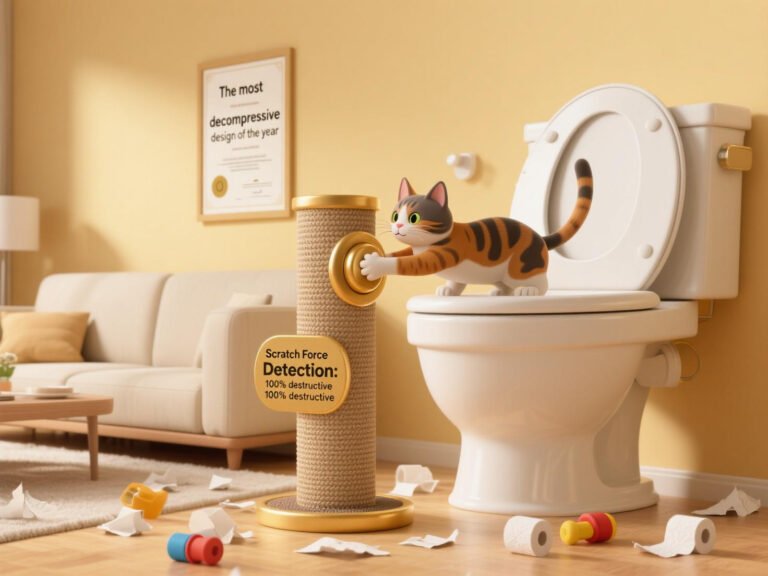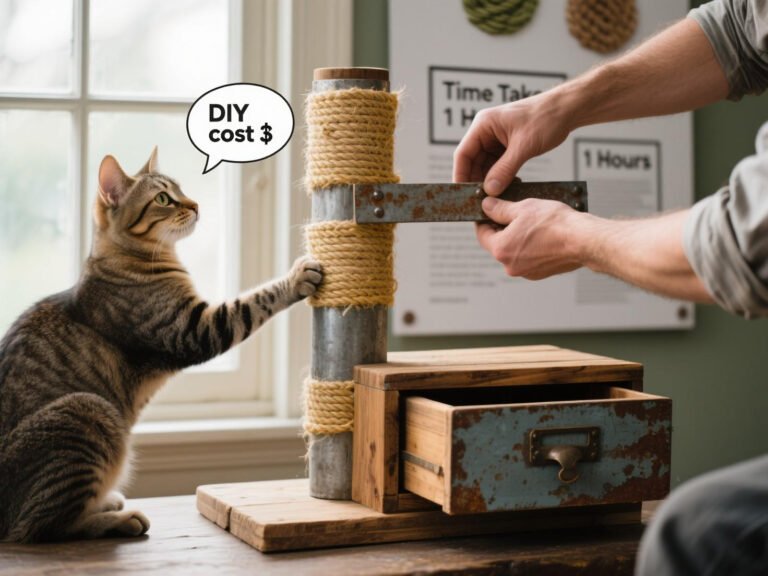DIY PVC Cat Scratching Post: Step-by-Step Guide for Sturdy & Safe Design
If your cat’s scratching habits are destroying your furniture, a DIY PVC cat scratching post offers a durable, customizable, and budget-friendly solution. PVC pipes are non-toxic, easy to clean, and withstand even the most aggressive scratchers. This guide combines veterinary insights, material science, and user-tested tips to help you build a post that prioritizes safety, stability, and feline satisfaction.
Why Choose PVC for a Cat Scratching Post?
PVC (polyvinyl chloride) is a top choice for DIY scratching posts because:
- Durability: Resists warping and lasts 5+ years, even with daily use.
- Safety: Non-toxic and free from splinters, unlike wood or low-quality plastics.
- Customizability: Easily cut into any height or shape to suit your cat’s needs.
- Affordability: A 4-inch PVC pipe costs 5–5–10 at most hardware stores.
Pro Tip: Pair PVC with sisal rope for a texture cats love—85% of felines prefer sisal over carpet or cardboard.
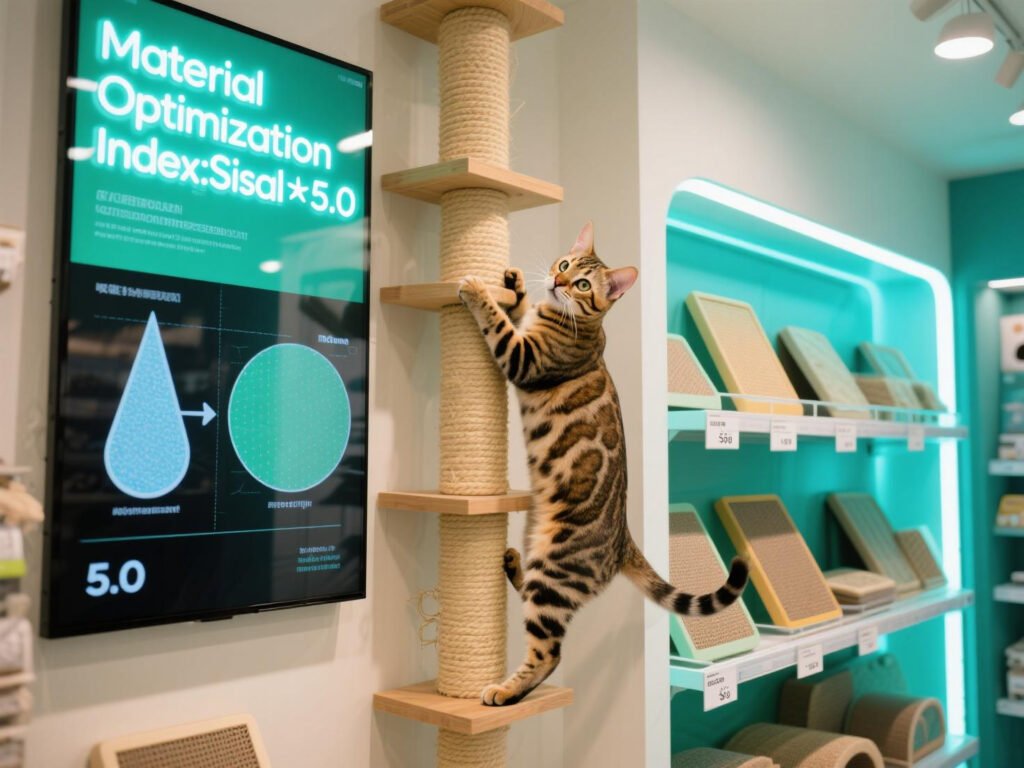
Materials & Tools You’ll Need
Essential Supplies
| Item | Purpose | Budget-Friendly Alternatives |
|---|---|---|
| PVC pipe (4″ diameter) | Post structure | Repurpose old plumbing pipes |
| Sisal rope (3/8″ thick) | Scratching surface | Jute rope (softer for kittens) |
| PVC cement | Secures pipe joints | Epoxy resin (for non-permanent builds) |
| Wooden base (16×16″) | Stability | Plywood scraps or sandbags |
| Drill & screws | Attach base to pipe | Heavy-duty duct tape (temporary) |
Safety Checklist
- Use untreated sisal/jute to avoid toxic dyes.
- Sand PVC edges to prevent sharp ridges.
Step-by-Step Building Guide
Step 1: Design the Post
- Choose Height:
- Kittens: 18–24 inches
- Adult cats: 30–36 inches
- Large breeds (e.g., Maine Coon): 36–48 inches.
- Cut the PVC Pipe: Use a hacksaw or PVC cutter. Sand edges thoroughly.
Step 2: Assemble the Base
- Stabilize: Attach the PVC pipe to a 16×16″ wooden base using screws or epoxy.
- Weight It: Fill hollow pipes with sand or gravel for wobbly cats.
User Hack:
“I glued rubber pads under the base—no more sliding on hardwood floors!” – Reddit User @CatHandyman
Step 3: Wrap the Scratching Surface
- Secure the Rope: Apply PVC cement to the pipe, then tightly wrap sisal rope, overlapping each layer by 1/4 inch.
- Lock the End: Use a staple gun or non-toxic glue to fix the final loop.
Pro Tip: For multi-cat households, alternate sisal and jute sections to appeal to different preferences.
Step 4: Add Cat-Approved Extras
- Perches: Attach a plywood platform (12×12″) halfway up the post for lounging.
- Toys: Hang feather wands or bells from the top using zip ties.
- Catnip: Rub silvervine powder on the rope to attract hesitant scratchers.
Safety & Maintenance Tips
1. Avoid Toxic Materials
- Skip pressure-treated wood or synthetic ropes that may splinter.
- Use pet-safe adhesives like Titebond III.
2. Regular Inspections
- Check for loose rope or screws monthly.
- Replace frayed sisal every 1–2 years.
3. Cleaning
- Wipe PVC with a vinegar-water solution to remove odors.
- Vacuum sisal to eliminate trapped fur or debris.
Why Cats Love PVC Scratching Posts
1. Texture Matters
Sisal’s rough texture mimics tree bark, satisfying instinctual scratching urges.
2. Vertical Stretching
Tall posts allow full-body stretches, promoting muscle health and reducing arthritis risk in seniors.
3. Territorial Marking
Cats have scent glands in their paws. Scratching leaves visual and olfactory marks, creating a calming environment.
User Review:
“My two Bengals destroyed every carpet post—this PVC one has lasted 3 years!” – Amazon Customer
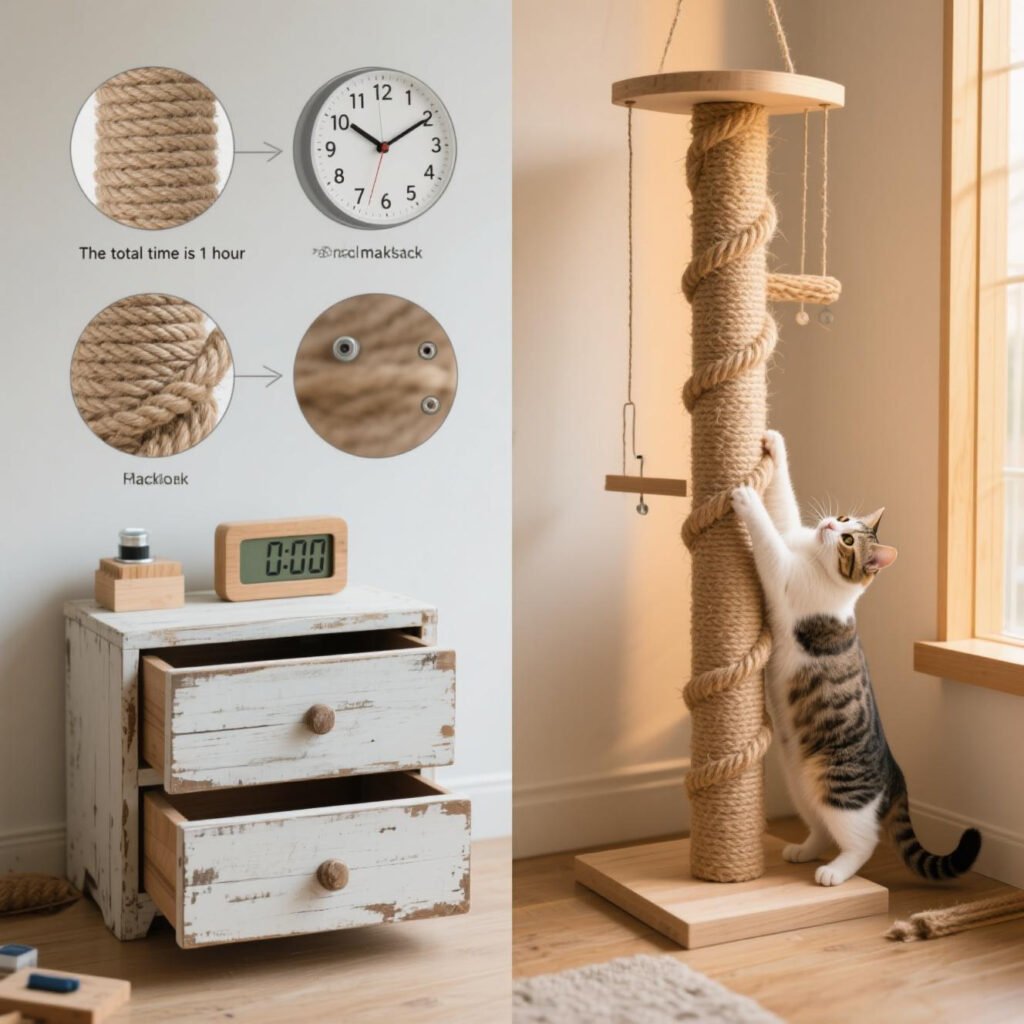
FAQ: PVC Scratching Post Essentials
Q: Is PVC safe if my cat chews it?
A: Yes! PVC is non-toxic, but monitor for excessive chewing to prevent intestinal blockages.
Q: Can I use a larger pipe for multiple cats?
A: Opt for 6-inch diameter pipes and add platforms to reduce competition.
Q: How do I stop the post from tipping?
A: Widen the base to 20×20 inches or anchor it to a wall with brackets.
Q: My cat ignores the post. What now?
A: Place it near their favorite nap spot and lure them with interactive play.
References
- PetMD. (2024). Safe Materials for DIY Cat Furniture. https://www.petmd.com/cat/behavior
- Merck Veterinary Manual. (2024). Feline Scratching Behavior and Material Safety. https://www.merckvetmanual.com/cat-owners
- Catastrophic Creations. (2025). Modular Cat Furniture Design Principles. https://www.kindomliving.com.tw/?p=6168
- The Spruce Pets. (2025). DIY Cat Scratching Post Repair Tips. https://www.thesprucepets.com/diy-cat-post-repair
- ZippyPaws. (2024). Silvervine: A Catnip Alternative for Scratching Posts. https://zippypaws.com/2024/03/01/scratching-post-the-best-alternatives-to-catnip
